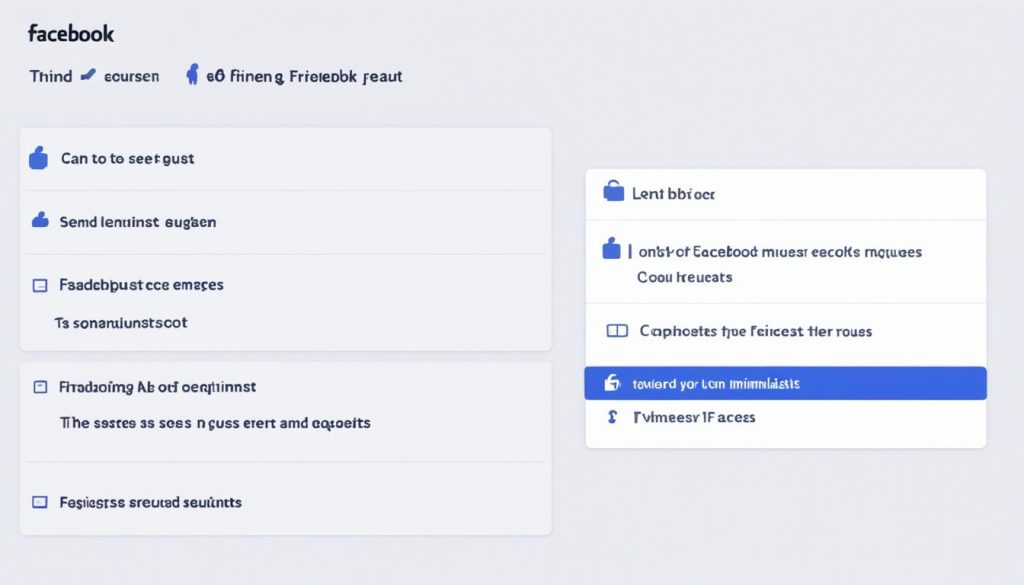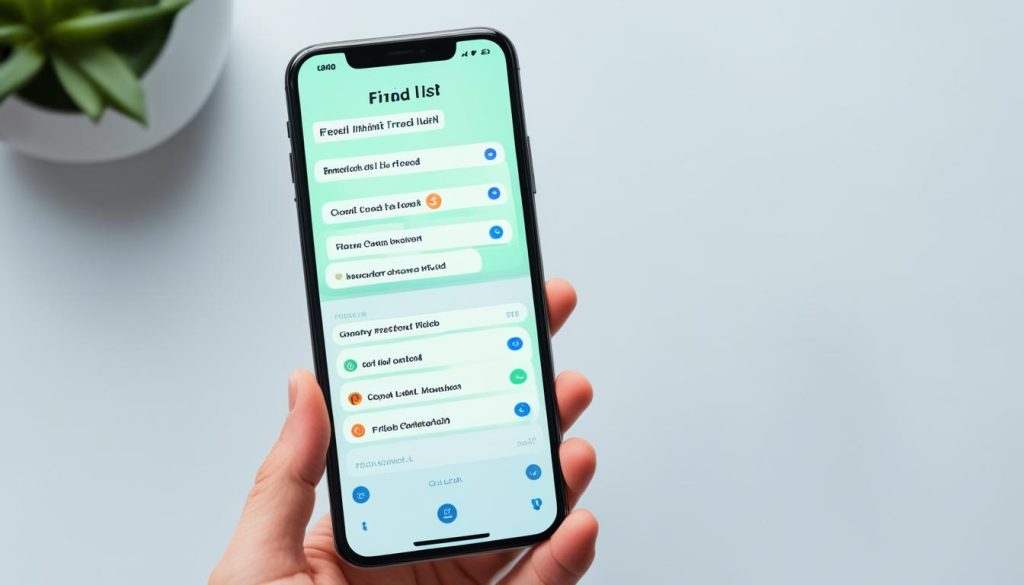Have you ever experienced the confusion of not being able to see someone on Facebook, even though you know for sure that they haven’t blocked you? It can be quite perplexing, but the truth is, there are several reasons why this might happen. Understanding these reasons can help shed light on why your friend isn’t appearing on Facebook, even though they haven’t blocked you.
Firstly, it’s important to note that privacy settings play a significant role in determining who can see a person’s profile and content. If your friend has set their privacy settings to restrict visibility to a select group of friends, you may not be able to see their profile or find them in searches, even though you are not blocked. This is especially true if they have set their profile to private, limiting access to only their approved friends.
In addition to privacy settings, friend request settings can also impact the visibility of someone who hasn’t blocked you. If your friend’s friend request settings are set to only accept requests from friends of friends, and you don’t have any mutual friends, you won’t be able to see or send a friend request to them. This limitation is a way for users to control their connections on Facebook and ensure they only connect with people they know indirectly.
Furthermore, it’s worth considering that if you have previously sent a friend request to someone and they denied it or marked it as spam, the “Add Friend” button will disappear for you. This can happen for various reasons, such as the recipient not recognizing you, sending too many requests in a short amount of time, or their account being flagged for suspicious activity. It’s essential to be mindful when sending friend requests to avoid being marked as spam.
It’s also important to note that Facebook has a maximum friend limit of 5,000. If your friend has reached this limit, they won’t be able to accept any more friend requests until they make space by deleting existing friends. Additionally, if someone has violated Facebook’s terms of service, they may be temporarily blocked from sending or accepting friend requests. These limitations can explain why someone who hasn’t blocked you may not be visible on Facebook.
While these reasons can be frustrating, there are some solutions and tips you can try to navigate this situation. Adjusting your privacy settings to allow friend requests from everyone can expand your network and increase your chances of adding the person you’re looking for. Clearing out inactive friends from your friend list can also create space for new requests. If all else fails, sending a polite message to the person explaining your intention and asking them to send you a friend request can break the ice. Sometimes, all you need is patience, as it’s possible that the person you’re trying to connect with is still considering your friend request.
Key Takeaways:
- Privacy settings and friend request settings can restrict visibility and the ability to send friend requests on Facebook, even if you haven’t been blocked.
- If someone denies or marks your friend request as spam, the “Add Friend” button will disappear for you.
- Reaching the friend limit of 5,000 or being temporarily blocked can also prevent you from seeing or adding friends on Facebook.
- Adjusting your privacy settings, clearing out inactive friends, or sending a polite message can potentially resolve issues with adding friends on Facebook.
- Patience and respectful communication are key when trying to connect with someone who isn’t visible on Facebook but hasn’t blocked you.
Now that you understand the potential reasons for why a Facebook friend might disappear without blocking you, you can navigate this situation with greater ease and understanding. Remember, while it can be frustrating, respecting others’ privacy settings and communicating politely can go a long way in building connections on social media.
Privacy Settings Restricting Friend Requests on Facebook
When it comes to connecting with others on Facebook, privacy settings play a crucial role. These settings allow users to control who can send them friend requests and who can see their profile. By adjusting these settings, users can restrict friend requests from reaching their inbox unless they meet certain criteria.
One way to limit friend requests is by enabling the option to only accept friend requests from friends of friends. This means that if someone is not already connected to one of your friends, they won’t be able to see the “Add Friend” button on your profile. While this setting can help protect your privacy, it can also prevent you from receiving friend requests from individuals outside of your social circle.
In addition to this, if your profile is set to private, people who are not already friends with you won’t be able to send a friend request. This is a common practice among users who prefer to keep their Facebook interactions limited to individuals they know personally. By restricting friend requests to only those you have approved as friends, you can maintain a smaller, more intimate network.
To check if someone has restricted friend requests, simply visit their profile and look for the “Add Friend” button. If it is missing, it’s likely that their privacy settings are in place to limit the friend requests they receive.
It’s important to remember that these privacy restrictions are personal choices made by individuals on Facebook. Respecting their privacy settings and understanding their preferences is essential when trying to connect with others on the platform.
Friend Request Settings and Limitations on Facebook
When it comes to sending or receiving friend requests on Facebook, there are certain settings and limitations that can impact this process.
If someone has selected “Friends of friends” as their friend request setting instead of “Everyone,” it means that only friends of their existing friends can send them friend requests. While this setting can enhance privacy, it can also limit the ability to form new connections if there are no mutual friends.
It’s important to check the friend request settings of the person you are trying to add as a friend. If they have restricted friend requests to friends of friends, you might not see the “Add Friend” button on their profile.
Remember, while these settings can be beneficial for protecting user privacy, they can also limit the potential for expanding your network on Facebook. Adjusting your own friend request settings to allow requests from everyone can increase the chances of connecting with new people.
Now, let’s explore some tips and strategies to overcome friend request limitations and build new connections on Facebook.
Strategies for Overcoming Friend Request Limitations
- Adjust your privacy settings: Consider allowing friend requests from everyone to widen your network.
- Expand your mutual connections: Engage with friends of your friends and build a larger network of mutual connections, which may increase the chances of being able to send friend requests.
- Send a polite message: If you’ve encountered limitations in sending friend requests, consider reaching out to the person with a friendly message explaining your interest in connecting. This can help break the ice and create a more personal connection.
- Be patient: If you’ve sent a friend request and are waiting for it to be accepted or declined, give the person some time to respond. Not everyone is active on Facebook regularly, so it’s important to be patient.
“Friend request settings on Facebook can restrict who can send friend requests, but there are strategies you can use to overcome these limitations and expand your network. From adjusting privacy settings to reaching out with a polite message, these techniques can help you connect with new friends on the platform.”

Denied or Marked as Spam Friend Requests on Facebook
If someone denies or marks your friend request as spam on Facebook, the Add Friend button will disappear, and you won’t be able to add them as a friend. This can happen for various reasons, and it’s important to understand why it occurs.
One possible reason is that the recipient doesn’t recognize you. If you don’t have any mutual connections or haven’t interacted on the platform, they may be hesitant to accept your friend request.
Sending too many friend requests in a short period of time can also lead to your requests being denied or marked as spam. Facebook has algorithms in place to detect suspicious activity, and if your account is flagged, it may result in your friend requests being restricted.
Additionally, there’s a possibility that the recipient mistakenly marked your friend request as spam instead of deleting it. It could be a simple error, but it can still prevent you from adding them as a friend on Facebook.
“I received a friend request from someone I didn’t know, so I decided to deny it. I prefer to connect with people I actually recognize,” said Sarah, a regular Facebook user.
When sending friend requests, it’s crucial to be cautious and considerate. Make sure you have a genuine reason to connect with the person and that they are likely to recognize you. Sending personalized messages along with your friend requests can help establish a connection and increase the likelihood of your request being accepted.
Remember, disagreement on Facebook is common, but it’s important to approach others respectfully. Avoid sending friend requests to individuals you’ve had conflicts with, as this can often lead to requests being denied or marked as spam.
Overall, friend request restrictions on Facebook can occur if someone denies or marks your request as spam. Being mindful of who you send requests to and maintaining positive interactions on the platform can help prevent such restrictions.
Friend Limit and Temporary Blocks on Facebook
Facebook imposes a friend limit of 5,000, which means that if you’ve reached this threshold, you won’t be able to send friend requests until you make room by removing existing friends. It’s essential to manage your friend list and prioritize connections that are most important to you.
Furthermore, Facebook has strict policies in place to ensure user safety and compliance with its terms of service. If someone violates these guidelines, their ability to send or accept friend requests may be temporarily suspended. This measure is put in place to maintain a secure and positive experience for all users.
Reaching the friend limit or being temporarily blocked can understandably be frustrating, especially if you’re eager to connect with new individuals on the platform. However, these constraints are in place to preserve the integrity and functionality of the Facebook community.
Remember to engage with your existing connections, stay involved in groups and communities, and make the most out of the friends you already have. Quality interactions are just as important, if not more so, than the quantity of friends on Facebook.

Understanding the friend limit and temporary blocks on Facebook is crucial for navigating the platform’s social dynamics. By being mindful of your friend list and adhering to community guidelines, you can ensure a positive experience and foster meaningful connections on Facebook.
Solutions and Tips for Adding Friends on Facebook
If you’re having trouble adding friends on Facebook, there are some solutions and tips you can try. By adjusting your privacy settings, you can expand your network and make it easier for others to send you friend requests. Clearing out inactive friends who are no longer active on Facebook can also make space for new requests. Here are some steps you can take to add friends on Facebook:
1. Adjust Your Privacy Settings:
Open your Facebook settings and go to the “Privacy” section. Make sure your friend request settings allow requests from everyone, not just friends of friends. This will make it easier for others to find and add you as a friend.
2. Clear Out Inactive Friends:
Go through your friends list and identify friends who haven’t been active on Facebook for a long time. You can remove them as friends to make room for new connections. Remember, it’s better to have a smaller, active network than a large, inactive one.
3. Send a Polite Message:
If you want to add someone who you don’t know well or haven’t interacted with recently, sending a polite message can break the ice and express your interest in connecting. Introduce yourself and briefly explain why you want to add them as a friend. Avoid being pushy or demanding; instead, be genuine and respectful in your message.
“Hi [Name], I hope this message finds you well. I came across your profile and found your posts and interests intriguing. I would love to connect with you on Facebook and learn more about your experiences. Looking forward to connecting with you!”
4. Wait for Friend Request Response:
After sending a friend request, be patient and wait for the person to either accept or decline your request. Sometimes, people may take time to review the request or may be away from Facebook. Respect their decision and avoid sending multiple requests or being overly persistent.
Remember, adding friends on Facebook is a social process that requires patience, respect, and effective communication. By adjusting your privacy settings, clearing out inactive friends, sending polite messages, and waiting for friend requests to be accepted or declined, you can enhance your Facebook connections and build a stronger network of friends.
Conclusion
In conclusion, if you cannot see someone on Facebook but they have not blocked you, there are several possible reasons for their absence. It could be due to their privacy settings, friend request settings, denied or marked as spam friend requests, reaching the friend limit, or temporary blocks. Understanding these factors can help you resolve the mystery of missing friends on Facebook.
When encountering this situation, it is essential to respect others’ privacy settings. Some users have strict privacy preferences that may limit their visibility to certain users. Additionally, being aware of friend request settings is crucial as it might restrict who can send friend requests.
To address the issue, you can consider adjusting your own privacy settings, clearing out inactive friends to make room for new connections, or sending a polite message expressing your interest. However, patience and respectful communication are paramount when adding new friends on Facebook. Give the recipient time to accept or decline your friend request. Remember, building meaningful connections takes time and understanding.
FAQ
Why can’t I see someone on Facebook even if they haven’t blocked me?
How do privacy settings restrict friend requests on Facebook?
What are friend request settings and limitations on Facebook?
What happens when a friend request is denied or marked as spam on Facebook?
Is there a limit to the number of friends you can have on Facebook?
What are some solutions and tips for adding friends on Facebook?
Hi there, I'm Jacqueline! Passionate about the ins and outs of Facebook, I created this blog to be your go-to resource for mastering ad campaigns, community engagement, and algorithm hacks. Looking to make your Facebook efforts truly 'Like'-worthy? You're in the right place. Let's elevate your social impact together!




